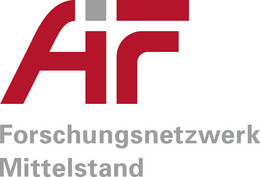FIS - Management information system for forwarding companies
- Transport Modelling and Process Planning
The background
The German freight forwarding market was regulated until 1993. This had two main consequences for controlling. Collective bargaining agreements and quotas for companies led to a lack of competitive dynamics as a result of reduced incentives to innovate and increase productivity. As a result, very few companies felt compelled to set up adequate controlling systems to improve corporate management. The concession resulted in a fragmentation of the market into many small and medium-sized companies. Numerous market participants do not reach the critical company size required to justify the administrative expense of introducing and implementing a comprehensive controlling system. The results of a study conducted by the Institute of Transport Logistics have shown that 62% of companies with up to 50 employees and still around a third of companies with between 50 and 200 employees have not implemented a comprehensive controlling system in their company. Adequate controlling requires the definition of suitable key figures. Financial indicators are non-specific, while performance, quality and structural indicators are industry-specific. While there are a number of VDI standards for internal logistics that define suitable indicators, e.g. for the performance of outgoing goods, there are no such indicators for the transportation sector. However, due to different objectives in terms of time, flexibility and quality of performance, these can only be used to a limited extent for forwarding companies.
Procedure
First, the conceptual structure and functionalities for the management information system are defined. The methods to be used for the profitability calculations are then developed. In addition, suitable key figures for the benchmarking module are defined. This is followed by the selection of the key figures that characterize these processes. In order to enable company benchmarking, financial indicators are also taken into account. In a further step, the actual data requirements and their availability are checked again. In previous projects, it became clear that a situation of information overload can easily be created. In addition, the data required to generate key figures is often not available in the required form. Finally, the FIS for freight forwarders is created taking into account the results of the previous work packages. For this purpose, the key figures are divided into structural, performance, quality and financial key figures. A system of key figures is generated for each group on the basis of factual dependencies. For the forecasting module, the data relationships to the financial indicator system are developed and mapped, and generic cause-and-effect chains are defined. They support the companies in their search for weak points, as they can provide clues for the search for changes. Finally, all results are transferred to an Internet portal in order to make them accessible to a broad public.
Intended results
The result of the research project is the development of a management information system (MIS), which contains a system of key figures for mapping forwarding companies and selected methods for evaluating operationally relevant investment decisions. In addition, the FIS will enable benchmarking of the participating companies. The FIS has a modular structure to enable simple implementation in the companies. It consists of three modules that can be used individually or in any combination. The first module comprises the key figures and the associated key figure system. In previous projects, key figures have already been developed for use in freight forwarding. The content of the research project is the merging of these into a system of key figures that enables both strategic and operational control. It may be necessary to create new key performance indicators. One objective is therefore the development of a system of key performance indicators and, if necessary, the creation of new key performance indicators suitable for use in freight forwarding. Another objective is to set up a forecasting tool. This pursues two intentions. On the one hand, the effects of investments on operations and the most important performance indicators are to be shown. On the other hand, optimal replacement times can be calculated for vehicles or handling equipment. There are also plans to set up a benchmarking platform for users. This contains the most important key figures required for process and company comparison. The comparison with competitors is particularly interesting for companies. At the same time, data procurement is the biggest problem in competitive benchmarking. This gap is to be closed as part of the project. Finally, generic cause-and-effect chains will be developed for the weak-point analysis. These will support companies in their search for optimization potential.
Contact person:Prof. Dr.-Ing. Uwe Clausen
Funding and partners







